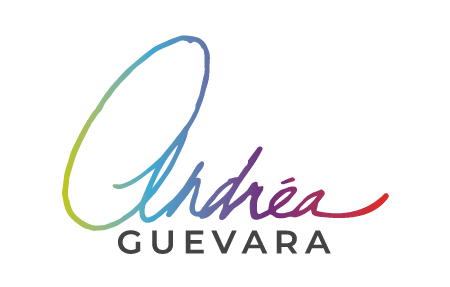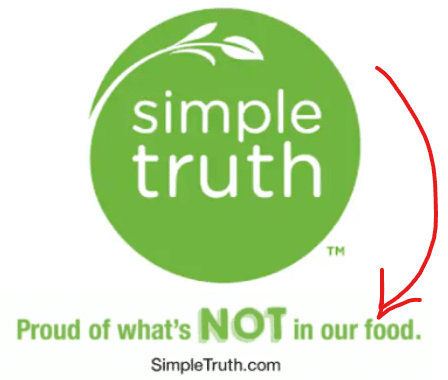Understanding Your Customers’ Journey is part 2 (of 3) of my How to Charge More for Your Work series. (Part 1 is here.)
Today, we’re going to work on understanding your customer’s journey as it relates to finding you and buying your services. But please note, this same ideology can be used to attract an audience to a product, book, etc. too.
This is the part of marketing that a lot of people only scratch the surface of and it shows. Even big agencies make the mistake sometimes of creating a demographic profile of customers, without exploring the psychographic profile. One of the most glaring examples (to me anyway) is the Simple Truth ad campaign tagline, “Proud of what’s NOT in our food.”
Okay, so we get what they’re trying to say right? That their food has good ingredients. But what they’re actually saying with that statement detracts from what they’re trying to sell. They’re proud of the ingredients that aren’t in their food? Huh?
I don’t know about you, but I consider myself in their general demographic–middle-class, health-conscious, prefer natural, whole foods, and also don’t want to break the budget. However, when I see a statement like that I think several things:
- Do they have anyone who oversees their copyrighting?
- If they pay this little attention to how they phrase their ads, do they actually even know what’s in their food?
- Even if this was phrased better, they’re not really telling me anything of value, or how this would actually impact my life. aka why I should care.
- It’s only memorable for the wrong reasons. (I couldn’t even remember the name of the brand when I went hunting to find the tagline online).
I think if they had taken a little more time to ask themselves the following questions, they’d have a much more successful campaign:
- Identify who their IDEAL customer is (demographic & psychographics)
- Understand what problem they are solving for them and how it affects their customers on an emotional level.
- Delineate how customers go about purchasing: Understand what decisions they typically have to make along the way.
These are exactly the concepts you’re going to explore for your own services. And then in the next step, we’re going to figure out how to use this information to create valuable opportunities to sell your service (for mo’ money), so hang tight and do this important work.
Here’s the practical breakdown of your Workbook (download here):
1. Identify who your IDEAL customer is (demographic & psychographics)
You’re going to write down the following.
- Describe your Ideal Customer
- Their personal values
- What’s most important to them in terms of your service
- Their budget (remember this is going to be based on what you WANT to charge)
- What personal traits they have
- What kind of attitude they have with working with a service provider
2. Understand the problem you are solving for them and how it affects your customers on an emotional level.
- What problem THEY think you’re solving
- What problem YOU are actually solving
- What THEY desire
- What THEY actually need in order to fulfill said desire
3. Parse out how customers go about BUYING: Understand what decisions they typically have to make along the way.
Let’s take a look at what they must decide as they go along their journey to buying your service:
- How do they find you in the first place?
- How they currently find you
- Other ways you’d like them to find you
- Do they like your work (visual, written, etc.)?
- Research: Do they look at the competition? If so, what do they compare?
- Research: Do they need to be educated in order to understand WHY to buy your service?
- Research: Will they understand the value of your offering?
- If they choose you, what will it say about them?
- Can they afford it? Or are they willing to pay for it?
- What is the step-by-step purchase process? How does this compare to others? And how big of a factor is it in their decision?
As you go about answering these questions, you’ll want to rate how important each step is to the process. For instance, if they currently find you in two ways: referrals and via social media, which one has a bigger impact? Rate accordingly (see the downloadable workbook).
I hope this helps! Again, for reference, here’s Step 1 of How to Charge More for Your Work; you can access it on my blog.





 There’s this unspoken longsuffering ethos in the literary world that writers must suffer for their craft, always look at their work as inadequate; and be relentless in their pursuit of the grand art of it all. And the ultimate reward for this holy work? Being a part of a literary elite culture of back-patting and back-stabbing.
There’s this unspoken longsuffering ethos in the literary world that writers must suffer for their craft, always look at their work as inadequate; and be relentless in their pursuit of the grand art of it all. And the ultimate reward for this holy work? Being a part of a literary elite culture of back-patting and back-stabbing.